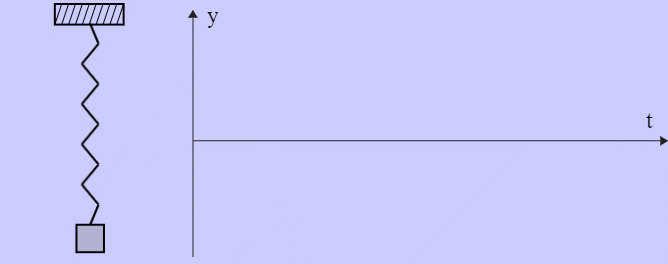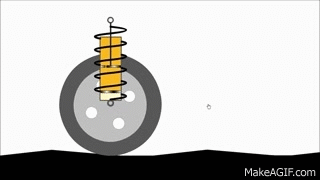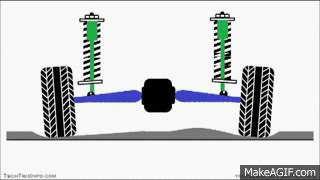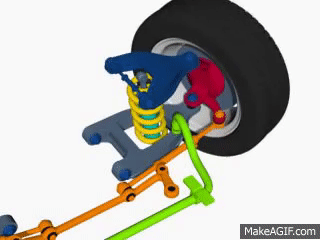What is Damping and Resonance?
In this blog we shall explore some of the fundamental concepts of vibration, with the aim of gaining an overall appreciation and understanding of resonance and damping without any mathematical treatment.
All structures are flexible to some extent. Vibration is the inevitable consequence of a structure due to its flexible nature, which results in an oscillatory motion.
Vibration may be totally unnoticeable to the human user of a structure or machine, or it may become a problem to health with excessive vibration of power tools for instance, where occupational diseases such as vibration white finger are common.
The vibration may become a problem to the structural integrity of a structure and ultimately can result in catastrophic failure.
The famous Tacoma Narrows Bridge failure can be seen here, offering an extreme example of where structures can catastrophically fail if vibration is not well understood:

Resonance
Below is what happens when we excite a structure (a wine glass in this demonstration) at the same frequency as it’s resonance frequency:

Natural Frequency
All structures have a so-called ‘natural frequency’; this is the frequency at which the structure vibrates with a very high amplitude if excited at that same frequency. In fact, all real structures have an infinite number of these natural frequencies. However, for practical purposes, we are usually only interested in those frequencies that are in the range at which we would typically excite the structure at.
For instance, let us take a typical motor car with an internal combustion engine that operates within the engine speed range of 1000-6000 RPM. This corresponds to an excitation frequency range of:
f1 = 1000 / 60 = 16.6Hz
f2 = 6000 / 60 = 100Hz
If the vehicle has a 4-stroke cycle with 4 cylinders, then this equates to 2 firing events every cycle of the engine crank.
In other words, the engine will excite the structure of the car chassis and body with a frequency in the range of 33.2Hz (2 x 16.6 Hz) to 200Hz (2 x 100Hz). If we ignore harmonics, then it is reasonable to conclude that the vehicle is not going to be excited at any of the resonant frequencies that exist above 200Hz.
Resonance occurs when the frequency of the structure is excited at or near to one if it’s resonant frequencies.
Damping
From the above discussion, it can be concluded that there are natural frequencies that are inherent within structures and these frequencies, if excited, will cause an uncontrolled large amplitude response, which could potentially have catastrophic consequences.
However, the energy of these large amplitude responses at resonance can be counteracted by the inclusion of damping. Damping is any mechanism that serves to absorb the energy of resonance and hence reduce the amplitude of response.
The energy of the high amplitude response is converted to heat. Below we see the time response of a single-degree of freedom lumped parameter model exhibiting a damped response.

Consider, once more, a typical motor vehicle, which will have a damping element attached to each suspension system. At a simple level, this consists of a cylinder containing oil, and this is indeed one of the most common forms of damping known as viscous damping.



Interestingly, such dampers are also commonly employed in tall skyscrapers to minimise vibration response to earthquake and wind loads. Observe the difference below of the multi-story building model with and without damping as an example.

So in conclusion, we can say that damping is introduced into a structure to reduce the amplitude of the response.
Interested in our engineering courses?
We have over 70 courses across all major engineering disciplines, including, mechanical, electrical and electronic, civil, aerospace, industrial, computer and general engineering. Visit our course catalogue for a complete list of fully accredited engineering programmes.
A small selection of short courses …
Diploma in Mechanical Engineering
Diploma in Structural Engineering
Level 6 Courses
International Graduate Diploma in Mechanical Engineering
International Graduate Diploma in Civil Engineering
International Graduate Diploma in Aerospace Engineering
Level 5 Courses
Higher International Diploma in Mechanical Engineering
Higher International Diploma in Civil Engineering
Higher International Diploma in Aerospace Engineering
Level 4 Courses
Higher International Certificate in Mechanical Engineering
Higher International Certificate in Civil Engineering
Higher International Certificate in Aerospace Engineering
Alternatively, you can view all our online engineering courses here.
<
Recent Posts
Understanding and Calculating Generator Efficiency and Output Parameters
Understanding and Calculating Generator Efficiency and Output Parameters Introduction The performance of a generator is often judged by how efficiently it converts mechanical energy into electrical energy. Understanding and calculating this efficiency, along with other key output parameters such as voltage, current, power factor, and load, is essential for evaluating performance and ensuring reliable operation. […]
Essential Cooling and Protection Devices: How They Work and Why They Matter
Essential Cooling and Protection Devices: How They Work and Why They Matter Introduction Generators produce a significant amount of heat and electrical stress during operation, which can affect performance and lifespan if not properly managed. That’s where cooling and protection devices come in. These essential systems, including fans, radiators, circuit breakers, and relays, work together […]
Justifying the Choice of Generators Based on Requirements and Characteristics
Justifying the Choice of Generators Based on Requirements and Characteristics Introduction Selecting the right generator isn’t just about power output, it’s about finding a machine that meets specific operational needs, efficiency goals, and environmental conditions. Different applications demand different generator types, capacities, and features. In this article, we’ll explore how to justify the choice of […]

